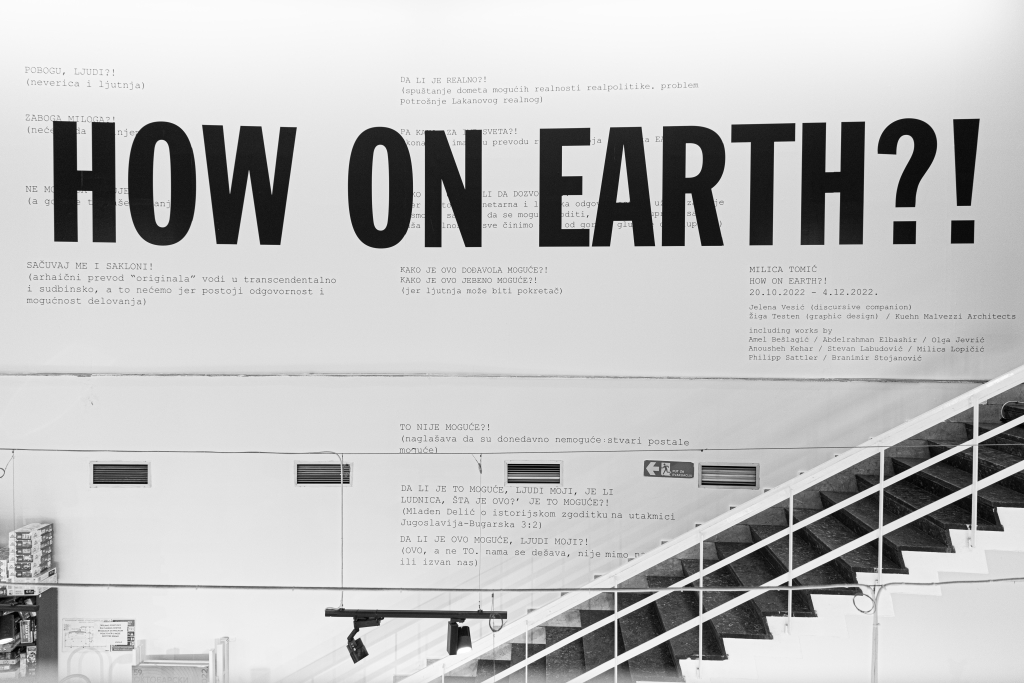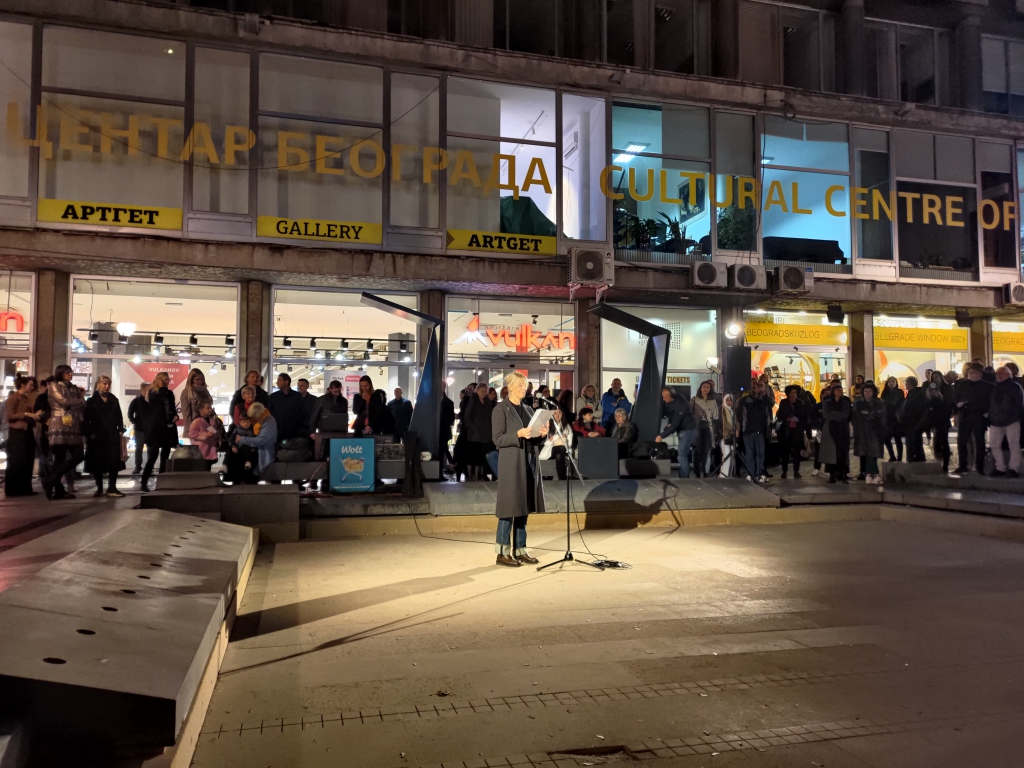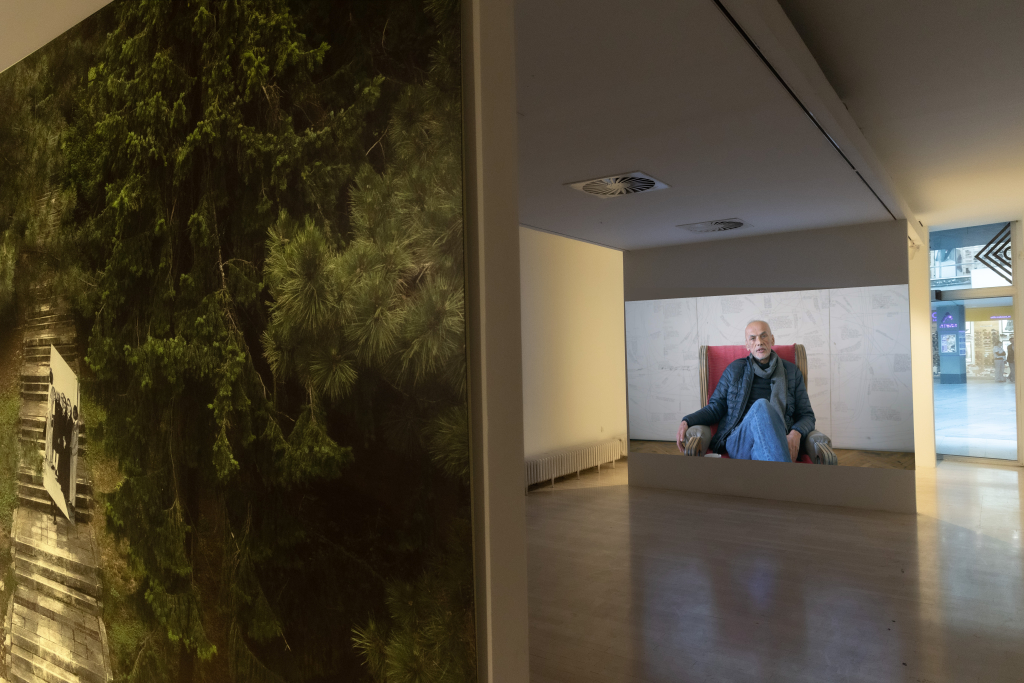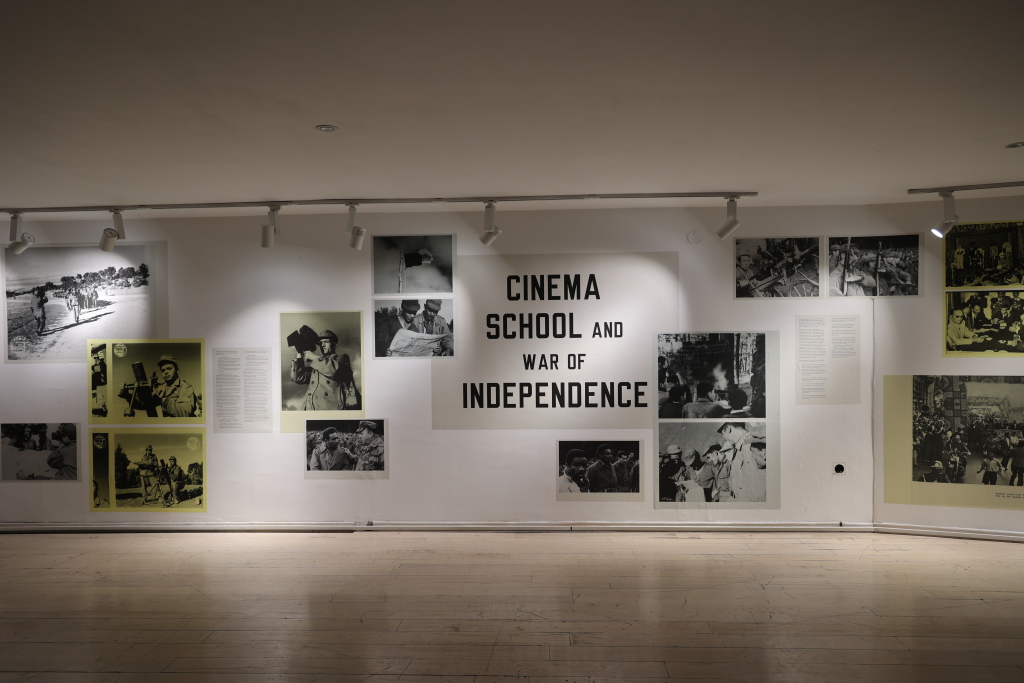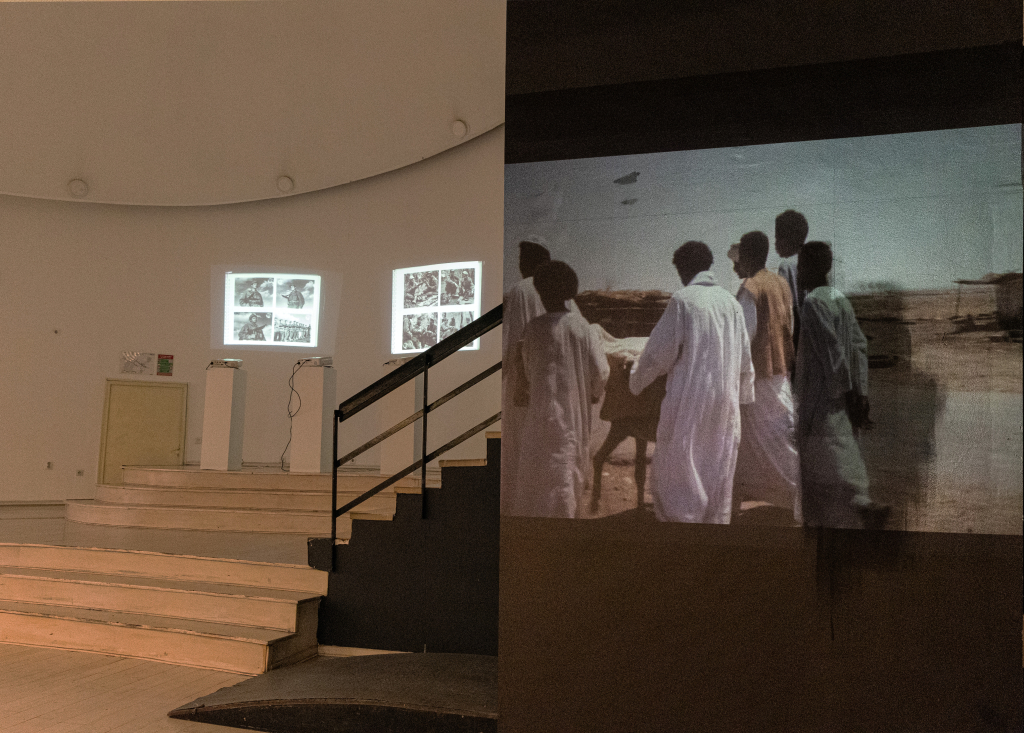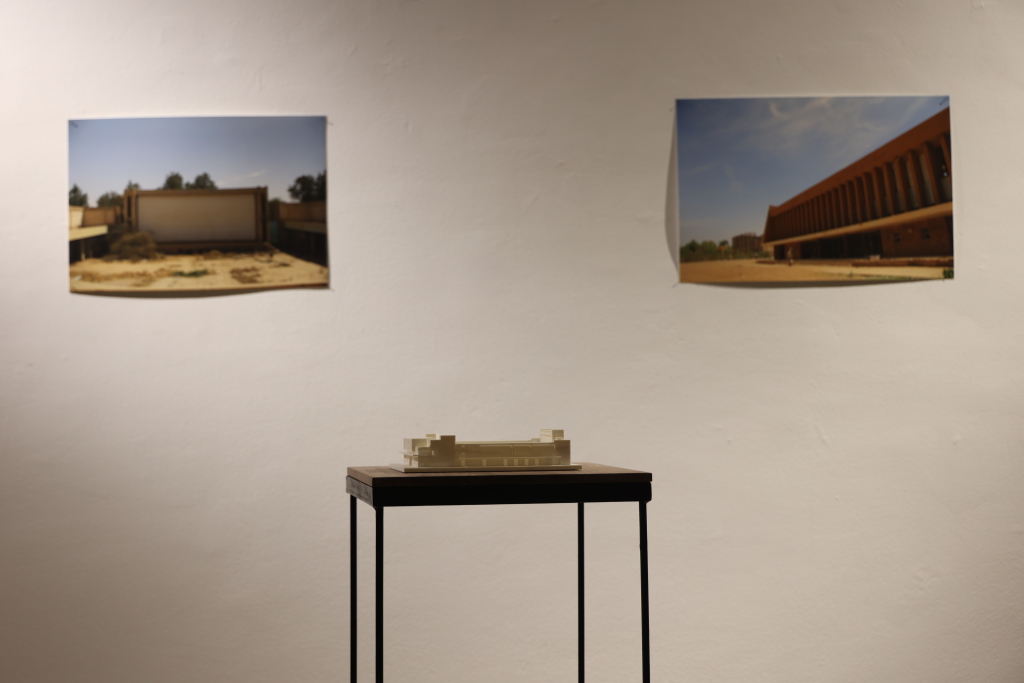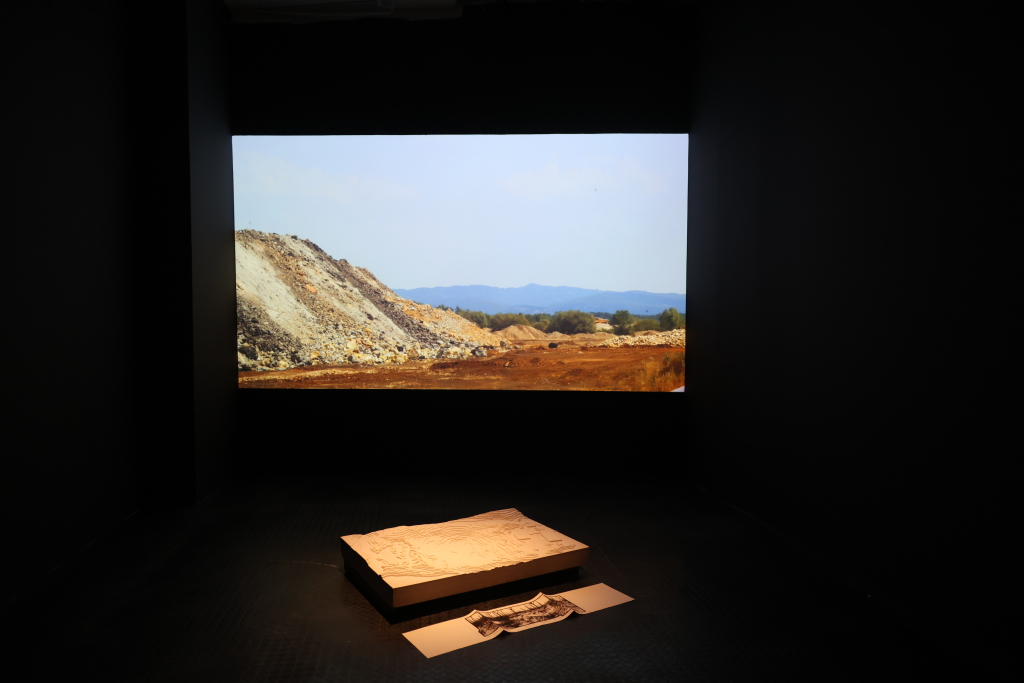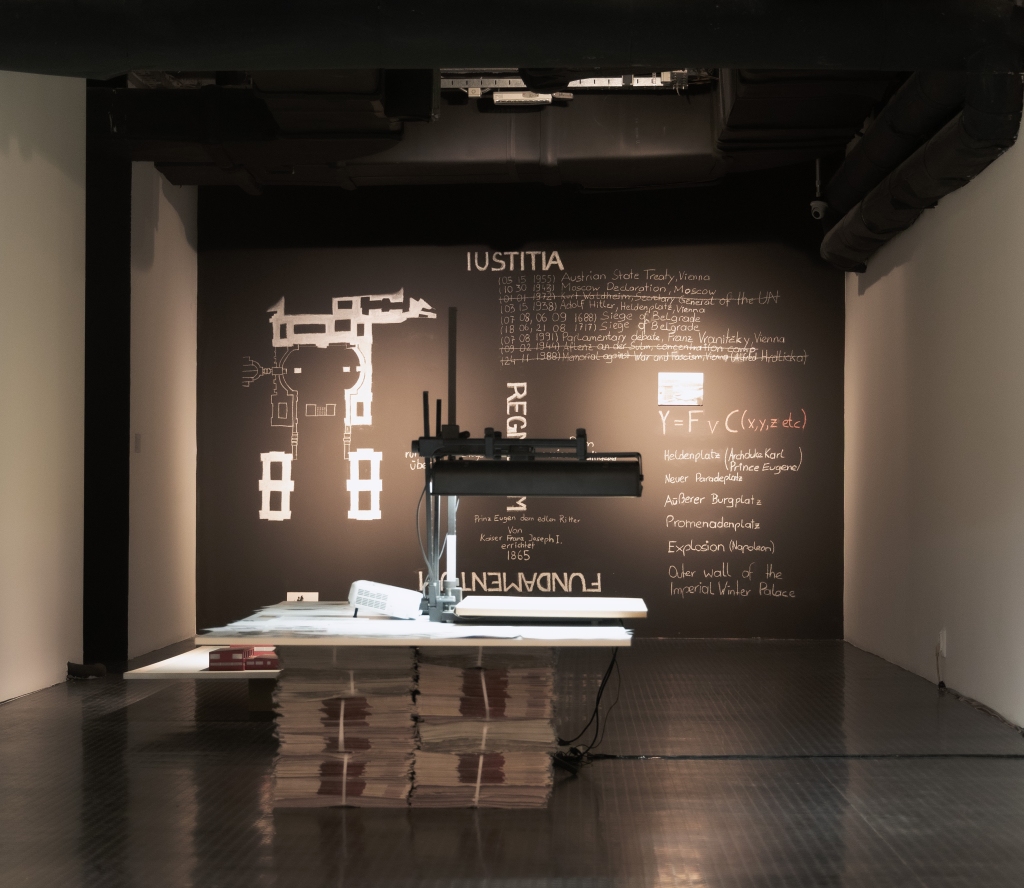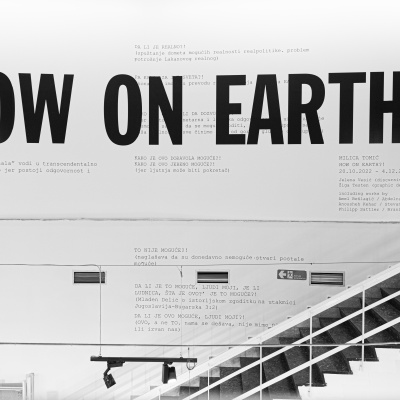Exhibition within the 59th October Salon (Belgrade Biennale)
October 20–December 4, 2022
Find more information about the 59th October Salon here.
HOW ON EARTH?! is a solo exhibition by Milica Tomić as Artist in Focus within the 59th October Salon in Belgrade co-curated by Jelena Vesić; graphic design by Žiga Testen; exhibition architecture by Kuehn Malvezzi Architects. The central theme of the 59 October Salon is a critical reflection on the art scene and, above all, the institutional critique related to October Salon itself.
The HOW ON EARTH!? exhibition includes artistic projects initiated by Milica Tomic or produced within the framework of the October Salon. Such works were produced throughout a long line of years of collaboration since 2001, and continued their life as long-term projects and collective artistic endeavours.
Who makes a profit from art, and who gains from it honestly? – wondered Raša Todosijević in his 1975 Edinburgh Statement, that was reinvented by Milica Tomić through a dialogue-performance at the opening of the 59th October Salon. Tomić's exhibition investigates the material effects of the ideology of normality in the context of the discussion on contemporary art. It deals with two tropes of the transitional period – the institutions and the market, the abolition of public property and the establishment of an art market. The spatial and video installations use fragments of reflective memory – fastened and unfastened in the montage of images and words, attitudes and positions – to portray the local contemporary art scene in the first decade after 2000. She focuses on the lull before the storm that heralds the beginning of a fierce ongoing struggle between contemporary art and cultural industries that was and still is an ongoing systemic occupation of contemporary art institutions. Tomić investigates cultural-political struggles and fantasies of a society yet to come, during a period in which anti-Yugoslav wars have formally ended, succeeded by the global financial and political crisis of 2008.
HOW ON EARTH!? includes works by Abdelrahman Elbashir, Amel Bešlagić, Olga Jevrić, Anousheh Kehar, Stevan Labudović, Milica Lopičić, Philipp Sattler and Branimir Stojanović; collaboration with Rosa El-Hassan and Branko Dimitrijevic.
Edinburgh Statement - who profits from art and who makes honest money, 2022
Milica Tomić's Belgrade performance of the Edinburgh statement - who profits from art and who honestly earns is a spatial-semantic extension of Raša Todosijević's statement from 1975. Tomić used Todosijević's original sound (1975) but intervened in the text by introducing the actual missing gender and enormously expanded positions and functions within the 'system of art'. In this performance, Tomić's focus was the perception of the time and place of the class struggle within the field of art in the current conditions of global neoliberal capitalism.
The Stolen Letter (Edgar Allan Poe), 2014
The photo was taken while researching the presidential photo archive (1947-1980 Josip Broz Tito) and working on the exhibition Travelling Commmunique in the Museum of the History of Yugoslavia (currently the Museum of Yugoslavia) in Belgrade. Entering the archive and accessing its invaluable material opened the question of the relationship between the era in which the photo was taken and us, the artists who today exhibit the material and claim certain rights to it. By breaking it down into fragments in a new, contemporary context, we change the relevance of the original intent, as well as the politics of the ideological framework in which they appeared, and thus, we irreversibly participate in the process of retrospective normalization. “The Stolen Letter” examines the relations of fragmentation of great political narratives, poses the question of the delayed audience, but also introduces a comment by Jacques Lacan, who said that a letter always arrives at the right address and finds the one it was addressed to, irrespective of the original intent of the sender.
Societal property or Barbarism, 2021
Branimir Stojanović
Societal property or Barbarism is commissioned by the Radar, Loughborough University's contemporary arts research programme, LU Arts. The video-lecture was developed as a contribution to the event Four Faces of Omarska: Open Video Sequence, curated by Livia Paldi and hosted by Radar & Perspectives in Transitional Justice in April 2021.
Cinema, School and the War of Independence, 2014-2015
Cinema, School and the War of Independence uses the form of the wall newspaper to introduce the logic of complicity of political trust through the image production practices defined by the political position of the SFR Yugoslavia within the socialist world and the global network of the Non-Aligned Movement countries. During the French settler occupation of Algeria, photographer and filmmaker Stevan Labudović, established a film and photography school for Algerian partisans on the battlefield. This breach of colonial rules led to a significant breakthrough: war images began to be produced not just by those responsible for the war, but by those whose voices existed but were silenced by the dominant forces. From 1959 to 1962, Labudović spent almost three years with Algerian partisans, carrying a camera in one hand and a weapon in the other.
Milica Tomić was born in Belgrade, Yugoslavia. Her work introduces and opens different fields and methods of contemporary artistic practice. She raises questions about political and economic violence, social amnesia, and tries to understand the inextricable link between intimacy and politics. Milica Tomić is one of the founders of the new Yugoslav artistic theoretical group, “Grupa Spomenik” (2002-2014); founder of the anti-disciplinary project Four Faces of Omarska (2009-); initiator of the independent exhibition space “Annenstrasse 53,” in Graz, Austria (2022-). Tomić is a professor and director of the Institute of Contemporary Art in Graz (2014-).
Deferred Action, a Retrospective Archaeology for the Cinema of Sudan
Deferred Action, a Retrospective Archaeology for the Cinema of Sudan investigates remnants of Sudanese Cinema through the urban archipelago of fifteen remaining open-air cinemas in Khartoum. It looks at the history of social, political and economic conditions after Sudan's independence in 1956 and how this artistic phenomenon and its urban manifestations are revealed today. It explores how cinema's emergence as a political space, especially under the influence of various socialist movements led by the Sudanese Socialist Union (SSU) in the 1970s and 1980s, played a significant role in depicting the semblance of, first, an independent, and later a united and diverse Sudan in the collective imagery of the Sudanese people. Thus, this project investigates the transformation of cinema buildings as an architectural typology, namely, how this typology reciprocally emanated from and shaped these circumstances during the development of cinema, both as an industry, and as a social and communal activity in Sudan.
Abdelrahman Elbashir was born in Al Damazin, Sudan. He completed his BSc. in Architecture at the University of Khartoum. He is currently studying for his Master’s at the Technical University of Graz and Politecnico di Milano. He is based in Graz and currently doing his Master’s thesis on the Sudanese Cinema; “deferred Action: A Retrospective Archeology for the Cinema of Sudan,” supervised by Prof. Milica Tomić at the Institute for Contemporary Art at TU Graz.
Highway Prijedor - Banja Luka, Alternative Routes, 2020
The agreed route of the highway would pass through five local communities within it. The initial plans for the highway included the demolition of 880 buildings along a 42-kilometer route. This project documents the effects of a campaign against this architecture of demolition.
The non-engagement of local political representatives resulted in the self-initiated organization of citizens through the founding of the Facebook group named autoput Banja Luka - Prijedor in June 2020.
The initiative spent the summer of 2020 using both administrative and local methods, with the explicit aim of relocating the route of the highway local community of Kozarac.
In the context of this initiative, using drone footage, as well as field consultations, Amel Beslagic, a student of Architecture at TU Graz in Austria sketched alternative plans with the aim of showing how the highway could be rerouted to the edges of the local communities of Kozarac. These plans were agreed to, successfully resulting in the change of the route within the framework imposed by the Institute of Civil Engineering from Banja Luka. In turn, on August 3, 2020, a new meeting took place with the mayor of Prijedor, on the premises of the city municipality. The meeting was attended by the Minister of Transport and Communications of the Republika Srpska entity, the Institute of Civil Engineering from Banja Luka, Chinese investors, local political representatives of the oppressed local communities, and representatives of the Citizens’ Initiative. After public discussions, remarks and the engagement of The Citizens’ Initiative, the number of demolished buildings was reduced from 880 to 237, of which 80 were in Banja Luka and 157 in Prijedor. Four of these buildings were located in the local communities of Kozarac.
Amel Bešlagić was born in Prijedor (B&H). After he graduated in architecture at Yildiz Technical University in Istanbul (Turkiye), he moved to Graz (Austria) where he started his master's in architecture at Graz University of Technology. Right now he is working on his master’s thesis “Highway Prijedor Banja-Luka”, supervised by Univ. Prof. Mag. Milica Tomić at the Institute for Contemporary Art, where he also works as a student assistant. Besides architecture, he is passionate about photography.
Infrastructures in Fragments, 2021
Video essay, March 2021
Infrastructures in fragments is commissioned by Radar and the AHRC Research Network 'Interdisciplinary perspectives in transitional justice'. It developed as a contribution to the event Four Faces of Omarska: Open Video Sequence, hosted by Radar & Perspectives in Transitional Justice on April 28, 2021.
Film Machine, 2017
Anousheh Kehar, Hilette Lindeque, Melissa Muhri, Alisa Pekić, Andrea Peković.
The Film Machine was developed by MA Students of the Institute for Contemporary Art (IZK) at the Architecture Faculty (TU Graz) in the Master Studio, Sans Souci: Four Faces Of Omarska led by Milica Tomić. The work was conceived as part of the Sans Souci exhibition at Haus der Architektur (HDA) in Graz as a continuation of the students’ lab that was organized within the project Sans Souci: Four Faces of Omarska by artist Milica Tomić at the Body Luggage, the central exhibition in the frame of the steirischer herbst festival curated by Zasha Colah at the Kunsthaus Graz.
The Film Machine is a research device that begins to identify the multiple layers of knowledge amassed while investigating the still unexplored urban structures that emerged in post-war Bosnia and Herzegovina in the project Sans Souci: Four Faces Of Omarska. It looks into novel, contemporary types of detention and concentration camps, reflecting their socio-political and urbanistic role in the reproduction of contemporary capitalist society and the conditions of the permanent ‘state of emergency.
The Film Machine is part of a larger project and exhibition that investigates how new forms of urbanism and sociality emerging in this post-conflict society are informed by the camp forms established during the wars of the 1990s. In the research process, we understood that the camps established were not relegated to the duration of the wars in the 1990s, rather, they continue to re-form in the present. With this realization, the scope of our research expanded, and the materials we collected exponentially grew. Newspaper clippings, radio announcements, televised news recordings, photographs, peace treaties, articles, oral and written testimonies, legal briefs, and much more. We came across materials charged with opinions and attitudes. We noticed that some things were never meant to be documented or kept in institutional archives and so they never existed as such. The more we read, listened to, watched, searched, found, and did not find, we were exposed to gaps in collective knowledge. With the Film Machine, we construct potential for continually forming montages - not to fill gaps or lend to a linear narrative - but to open space for analyses and examination towards the ongoing production of knowledges.
Anousheh Kehar is an architectural designer/researcher, currently a Ph.D. candidate at the Faculty of Architecture and Planning at TU Wien. As an M. Arch student, she has engaged in the project “Sans Souci. Four Faces of Omarska” led by Milica Tomić. Since then, Anousheh co-founded the Sans Souci Collective with Džana Ajanović, Philipp Sattler and Milica Tomić. With the collective continuing to expand, along with others they run Annenstrasse 53, an independent exhibiting space in Graz, Austria.
IUSTITIA REGNORUM FUNDAMENTUM or Justice is the Foundation of Reign/Power/Control
What is history if everything that happened was legal? And what is the present if everything that is happening is legal?
IUSTITIA REGNORUM FUNDAMENTUM explores the role of power and representation for the constitution of a state after the rupture of war. The installation departs from a series of photographs that show a part of Heldenplatz, the main square of the imperial Hofburg complex in Vienna and the centre of Gottfried Semper’s ever-unfinished vision of the so-called ‘Kaiserforum’ (Imperial forum). The image’s archival register reads them as depictions of the statue of Prince Eugene of Savoy. They were shot shortly after the end of World War II in Central Europe. Through a multilayered research-based exploration, the work unravels the casting of post-war Austria from its imperial, colonial and fascist pasts retained into the present. Following the material changes of the statue, ideological framings and the continuous re-interpretation of the mythology of Prince Eugene, the work traces these violences through documents, drawings and a performance lecture.
Philipp Sattler (b. 1990, Wolfsberg, Austria) is a researcher, artist, educator and writer. His work concerns the material and conceptual conditions, spatial manifestations and performative interactions of agriculture, policy and property within and as fascisms. He works on the past and present history of National Socialism and the Austro-Hungarian Empire in Austria. In his practice, he experiments with installations, lecture-performances, film and video making, and forms of (poetic) writing. He is a founding member of Sans Souci Collective and Das Gesellschaftliche Ding, who operate and curate the exhibiting space Annenstrasse 53, in Graz, Austria. Philipp Sattler works between London and Graz and lives in the Austrian countryside.
